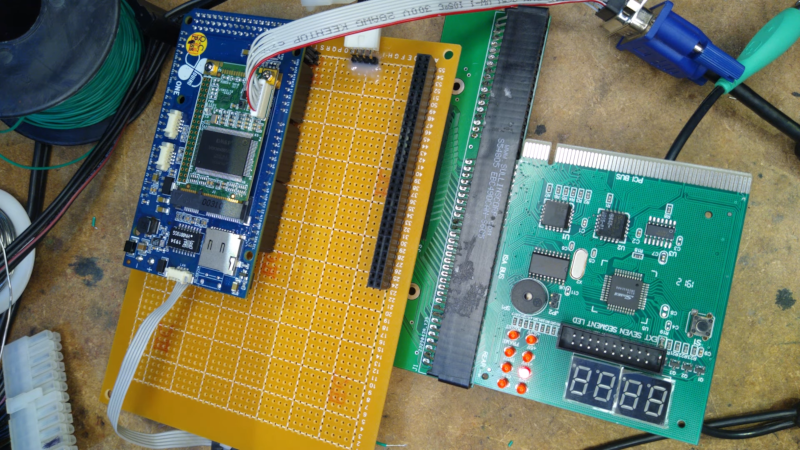It has been a while since we’ve seen a 86Duino, but [TheRasteri] reminded us about it, with his video showing how to use one to run classic MS-DOS games. To be fair, the computer isn’t really an Arduino, it’s essentially a tiny 486 PC on an Arduino-style PCB.
If it were just running DOS games on a tiny PC, that wouldn’t be very newsworthy. However, the board by itself has no video card and, as [TheRasteri] points out, sound card compatibility is also a problem. A carrier board, however, has a tiny VGA card on it, and thanks to some work from another user, it is possible to add an ISA bus to the board if you want to plug in a legacy sound card.
The ISA hack was done neatly, but it is a bit of wiring. Instead of using a normal ISA backplane, it is possible to use a PC/104 backplane, if you have cards that will fit that bus — electrically, they are the same. The board was able to run DOOM and Quake at nearly 30 frames per second. Not bad. He did have problems getting a mouse to work, though.
Got a bit nostalgic watching him use QBasic to directly write to registers on an ISA card. If you want an old DOS machine and don’t want to tie up a lot of space, this could be the ticket. Especially if you need it to run some old piece of hardware that won’t work with modern computers. We have to wonder if anyone would make a USB to ISA adapter out of something like this. The drivers would seem to be the hard part.
We saw the 86Duino nearly 10 years ago when there were a few other x86 single-board computers around. Apparently, lots of people want to run vintage games.
















great choice of connector there. just great.
I wonder were he found a bread board with the shifted pin header…
He mentions that annoyance (4:15), and went with the bend-the-pins-and-force-it option (4:39).
I see Betteridge’s law of headlines still holds…
I learned nothing from this misleading article (and headline until) I came to your comment. Thank you!
No, not on an Arduino.
But still a neat industrial uPC
Hmm… 486 was when predictive branching after a quick search I found out that Vortex86 chips are immune to both meltdown and spectre flaws! Linux added proper detection to avoid applying mitigations as well. Good show! Source: https://www.icop.com.tw/news/858
I think I speak for the entire internet when I say ‘huh?’
The 80386 was even better for seld-modifying code, though. :)